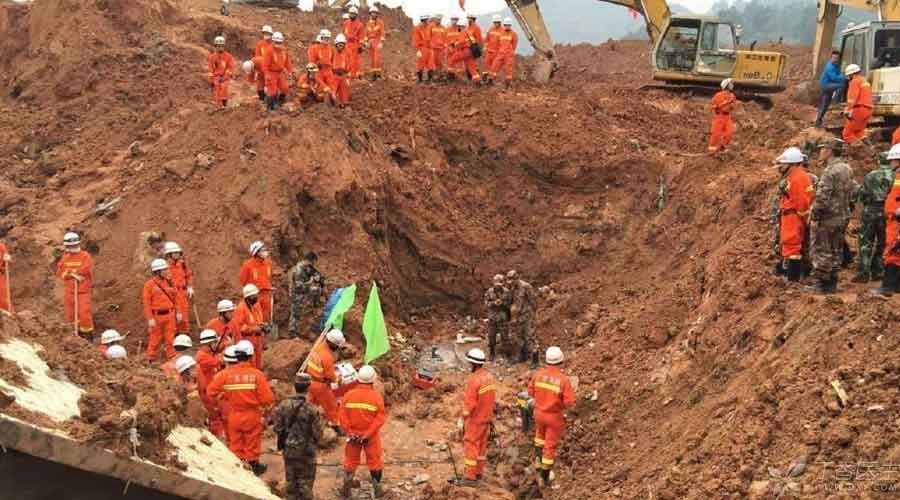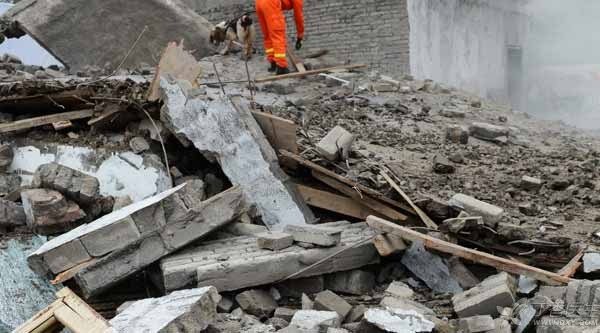
After the landslide, the sound of rain in Shenzhen went from one sound to another. Is it a natural disaster or a man-made disaster? There is no conclusion yet.
Review of Landslide Events in Shenzhen
According to a press conference in Shenzhen, at about 11: 40 on December 20, 2015, a landslide occurred near an industrial park in Guangming New District of Shenzhen, causing 22 buildings to be buried.
As of 14: 30 on the 22nd, 76 people had been missing.
At 6: 38 on the 23rd, rescuers successfully rescued a man who had been trapped for 67 hours. He was conscious and was taken to the hospital by ambulance. He told the search and rescue officers and soldiers that there was still a survivor nearby. Unfortunately, when the rescuers found him, the man had no signs of life.
Looking at the news of the rescue, as a former intensive medical doctor, some pictures flashed out unstoppably:
In the Wenchuan earthquake, Chen Jian, who had just been married for a year, endured 73 hours under the ruins. During the rescue process, he also chatted with everyone through the reporters present and said, “I don’t have much hope in my life, I just want to live in harmony with my wife all my life.” The officers and soldiers fought for 6 hours and finally rescued him. As a result, he stopped breathing on the way down the mountain.
Successful rescue does not mean that you are out of danger.
The 72 hours after the earthquake are the prime time to save lives, but similar tragedies that give people great hope and are shattered have occurred more than once.
Just now, the person who was still conscious and answered clearly suddenly became unconscious a few minutes later and died after ineffective rescue. Why on earth is this?
My mind is full of such a series of messages: Squeeze syndrome causes hyperkalemia? Sudden release of toxins caused cardiac arrest? Combined with extensive injuries to bones and surrounding muscles and nerves? Shock? Renal failure?
Stop! Is it necessary to say all this? Yes, there is no time for popular science.
Will such a tragedy also occur when buildings are buried and collapsed due to this landslide?
It’s entirely possible!
Data show that the proportion of squeeze syndrome caused by building collapse is higher than that caused by earthquake.
How dangerous is crush syndrome?
Isn’t it okay if the squeezed leg is loosened?
This is indeed the case with a few minutes of mild compression, while a long period of severe compression is not so simple.
Under great pressure, muscle cells of limbs will disintegrate instantly like eggs falling to the ground, causing tissue necrosis. Even if the pressure is slightly lower, it will also happen for too long.
Potassium and other necrotic substances that are usually concentrated in cells quietly accumulate in the compressed limbs. Once decompressed, the following conditions may be caused:
- A large amount of toxins are released instantly: Once rescued, When the weight was removed, All kinds of toxins produced in the compression were just pressed by blood vessels. Can’t leave carefree, now like opening the floodgates, no scruples into the heart, high potassium, toxins caused cardiac arrest. Toxins have no time to remove metabolism: in normal times, a little tissue damage can be slowly removed by metabolism. However, patients with squeeze syndrome after long-term compression may die within a few minutes.
In addition, there is another unconfirmed speculation: swelling of lower limbs and thrombosis in blood vessels. Once loosened, thrombosis enters the lungs and pulmonary embolism may also be the cause of death.

Can limb protection and life protection be considered?
Limbs that have been oppressed for a short period of time need to be quickly relieved of the oppression so as to restore blood supply to the limbs and avoid necrosis and disability.
However, after a long period of oppression, in order to prevent the spread of infection and toxins, amputation is likely to be required to save one’s life.
For on-site rescue experts, the moment they are rescued, they may face a choice: can they save the limbs of the injured as much as possible?
This is a difficult decision. As a popular science article, we don’t want to make this decision on behalf of patients or doctors. On-site experts need to make life and death choices in a short period of time. What we need to face is choice and trust.
In an investigation of Wenchuan earthquake, it was found that 14 cases of 17 cases of severe limb compression were finally amputated after rescuing various complications at great cost.
If life is at stake, can you understand [losing one’s life to protect one’s handsome]?
Even if you keep your limbs, you are still not out of danger.
Apart from other necrosis and toxins, whether it is the prevalent hyperkalemia in squeeze syndrome found in animal experiments or a case study of 66 squeeze syndrome cases after Wenchuan earthquake, it is found that more than half of the cases have hyperkalemia, which does not include those rescued who died immediately.
Severe hyperkalemia can cause cardiac arrest and sudden death.
If conditions permit, Portable instruments can measure the patient’s blood condition in a very short time, which can buffer the heart before rescue and prevent toxins from flooding in. In addition, for a person who has been pressed for several days, normal fluid replacement is also very necessary. In addition to drugs, blood purification equipment (hemofiltration, hemodialysis machines) have also contributed to saving lives.
However, for the injured who have just been rescued from the ruins, the toxins in their bodies may still spread further and threaten their lives at any time on the way to the hospital.
Having said a lot, we ordinary people can do very few things directly for the rescue of major disasters. Perhaps every decision made by doctors is full of risks. Even if it is clearly written in the guidelines, it often becomes unknown instantly and requires each of us to bear it together.
Still can’t give up hope
In the face of disaster, one can never give up the hope of life.
The golden 72 hours of watching Shenzhen debris flow rescue have passed, but the rescue team is still struggling in the front line and has not given up any hope of life.
In addition to paying the highest respect to all the personnel involved in the rescue at the scene, we have to admire the tenacity of life and always believe in the miracle of life no matter when and where.
